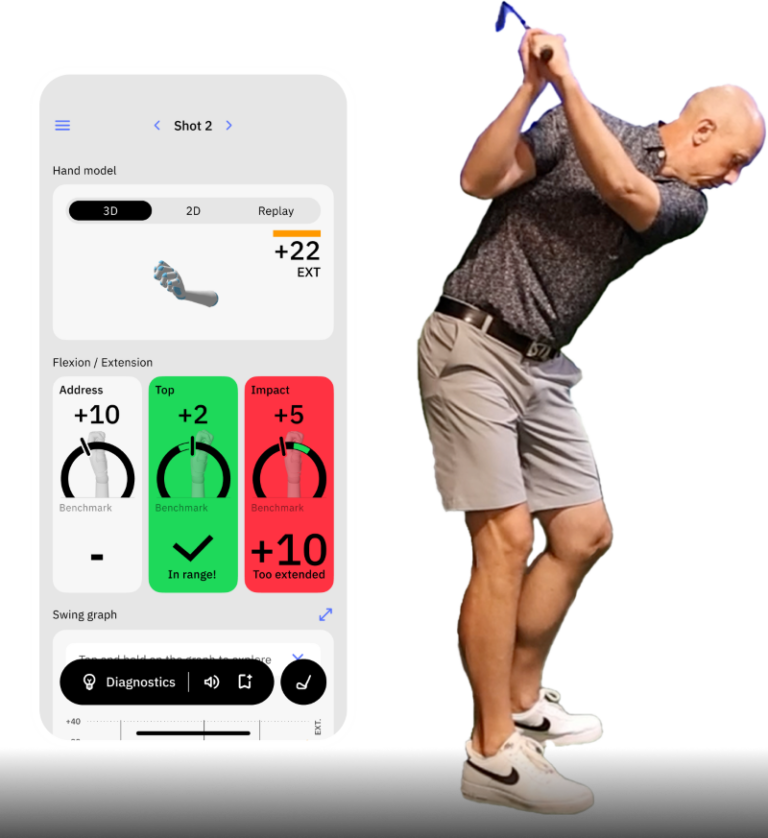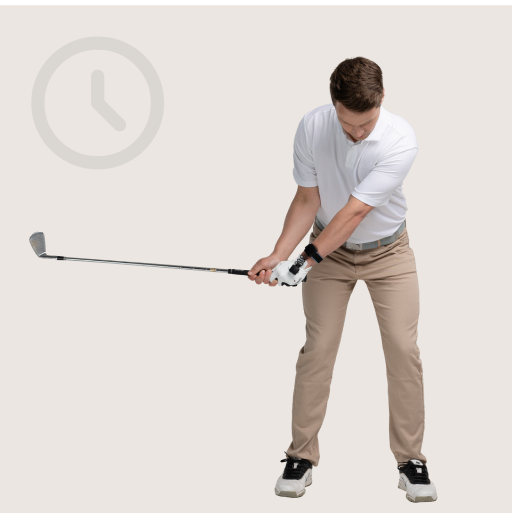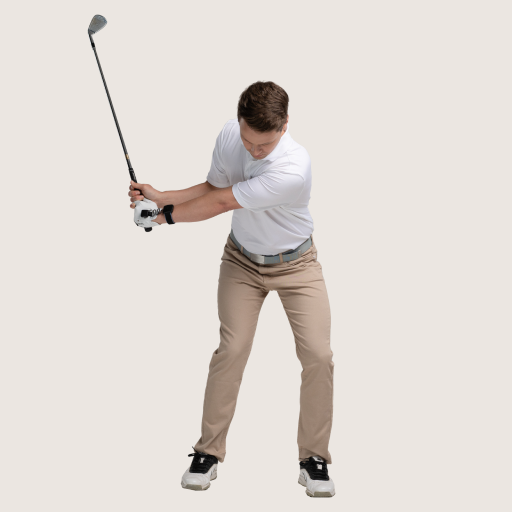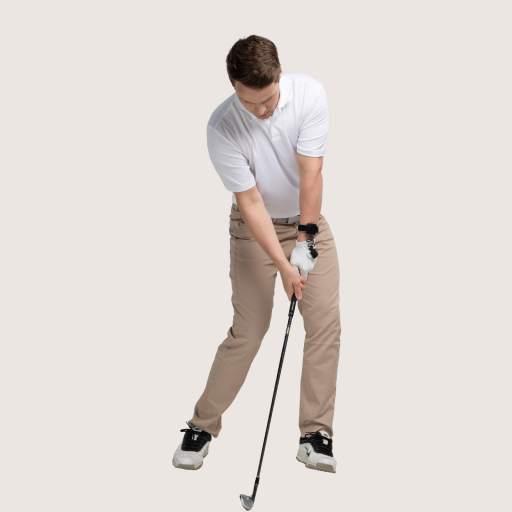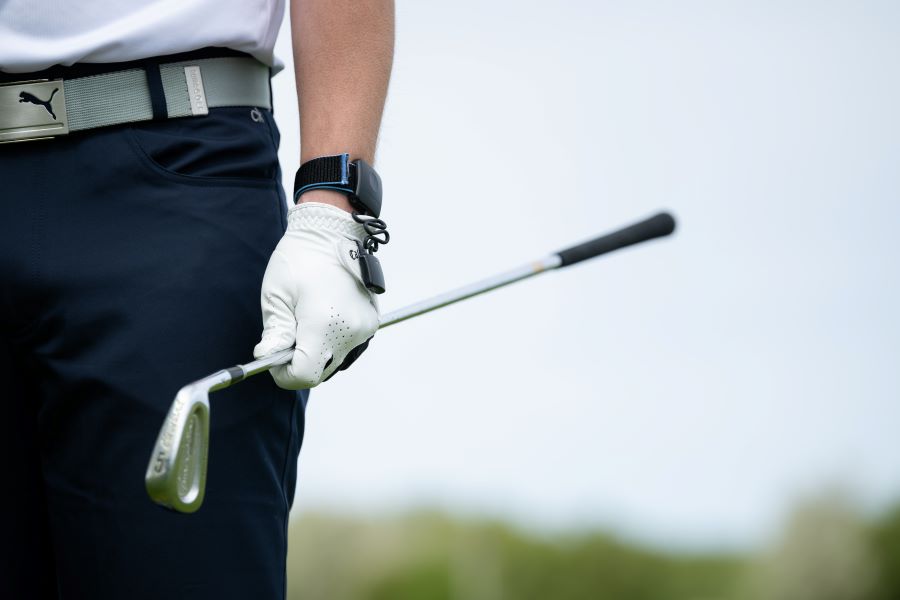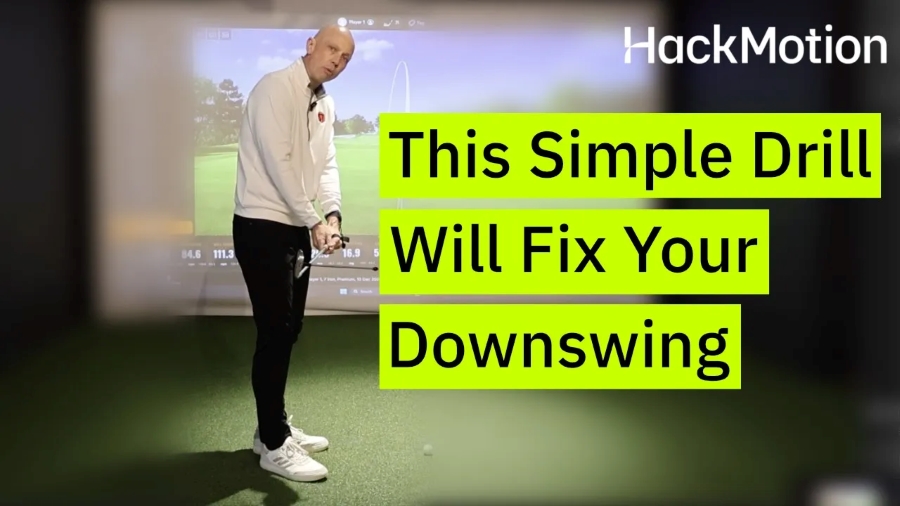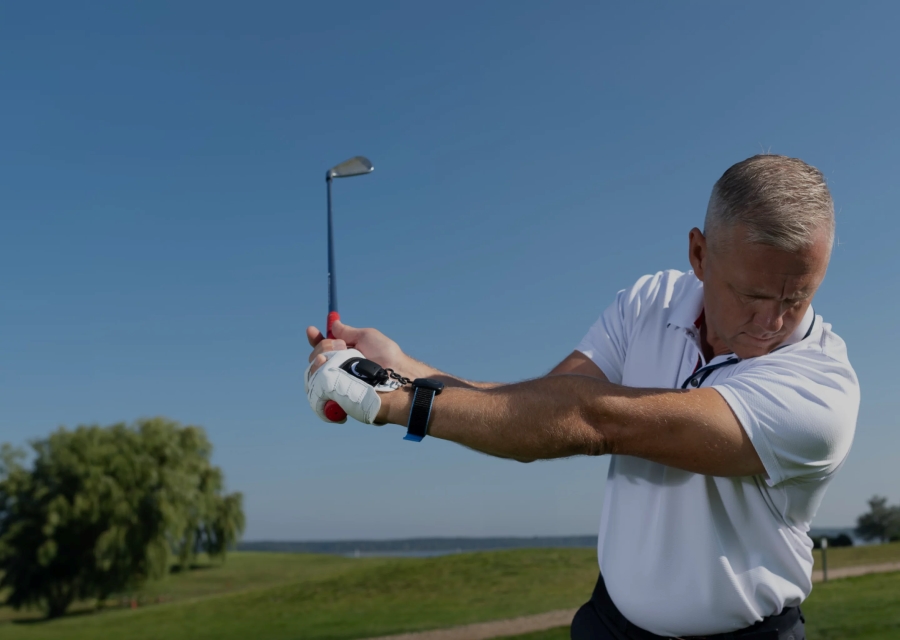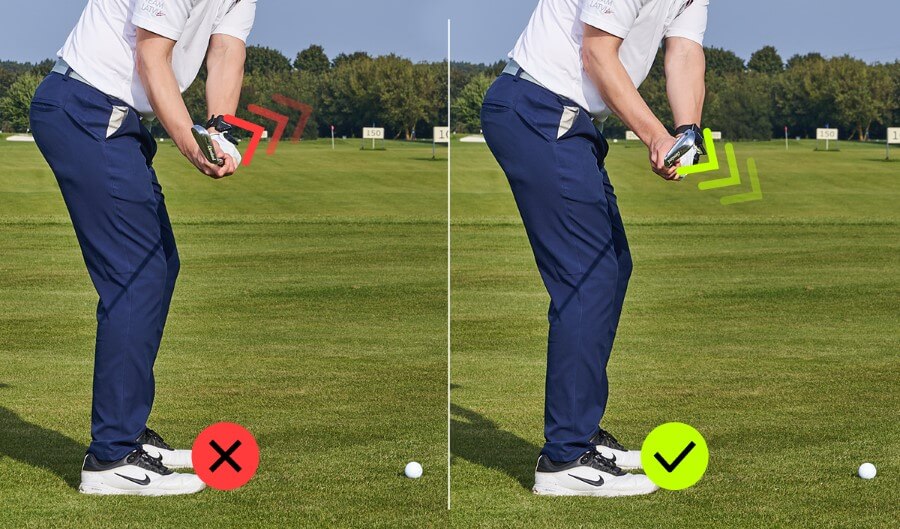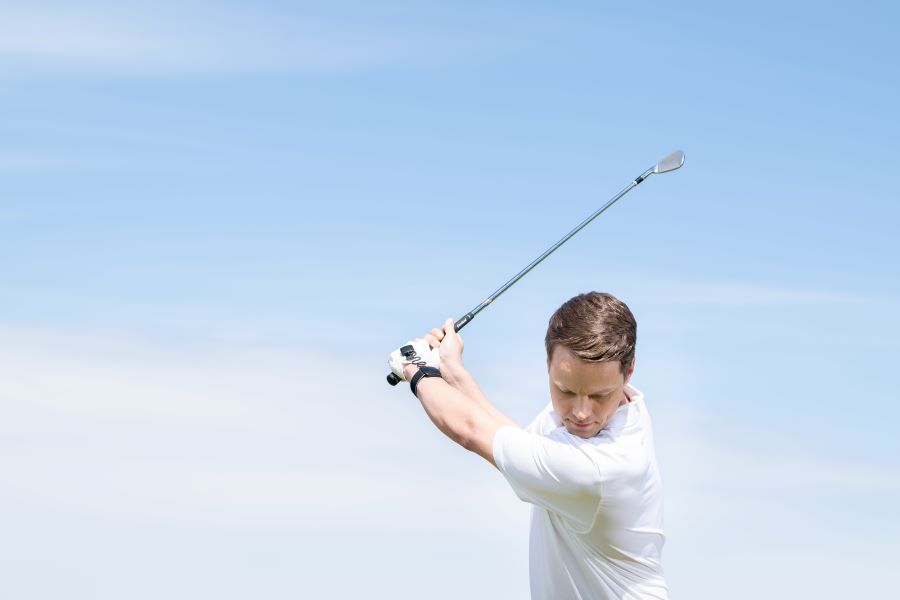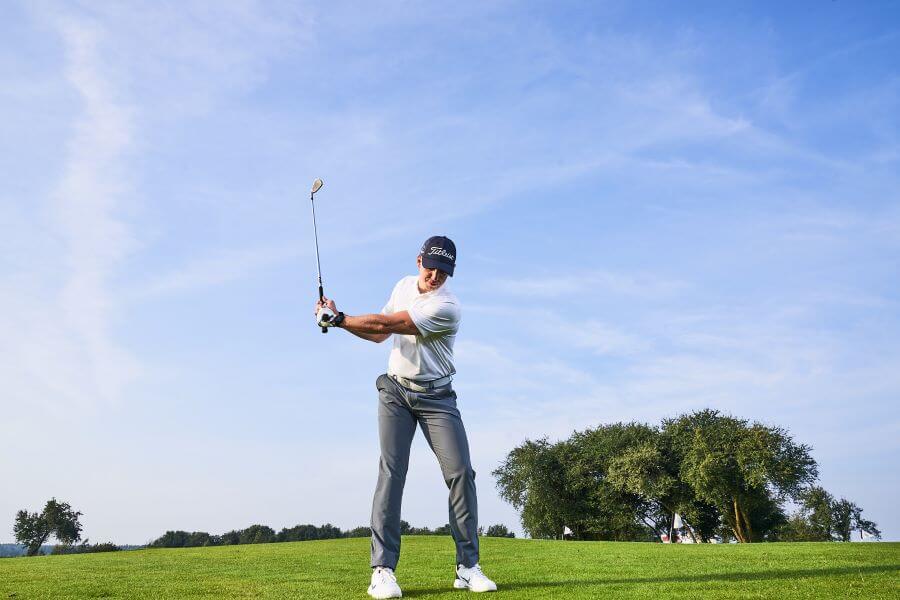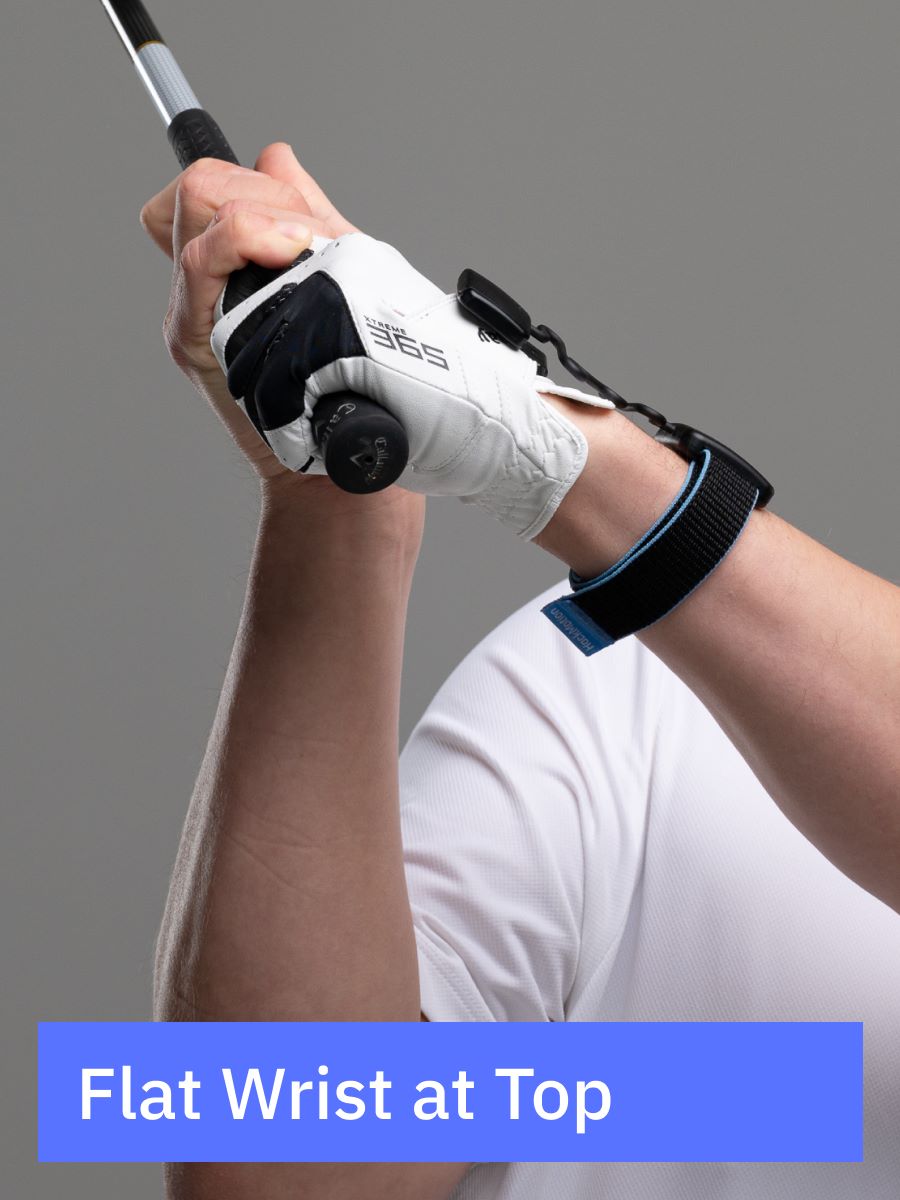How to Square the Clubface at Impact (A Comprehensive Guide to Do it Consistently)
To hit a golf ball straight, the clubface must be square at impact. It’s as simple as that.
The real issue lies in what must be done to square the clubface.
If you are ready to learn what it takes to square a clubface and finally start striking the ball the way the pros do, you are in the right spot.
Squaring the clubface is partially about understanding the concept and finding the right drills to get you there.
Squaring the Clubface at Impact (Key Takeaways)
If you don’t have time to read our complete guide on how to square a clubface, here are the things you can take away for now until you have time to read the in-depth guide.
- Wrist angle, especially flexion and extension, will open and close the clubface in the golf swing.
- If your wrist angle at setup or the top of the backswing is incorrect, it’s difficult to recover and square the clubface at impact.
- The most common issues for golfers at impact are an open clubface and too much wrist extension.
- The quickest way to learn how to control the clubface is to measure your wrist angles and make necessary adjustments.
- When you can control the amount of extension in your lead wrist through impact, you can also increase the power at which you swing through the golf ball.
If you prefer to watch instead of read, here’s a video recap explaining how to take control of your clubface and consistently square it at impact.
Contents
How to Square the Clubface at Impact
To square the clubface at impact, your wrist must maintain the right balance of flexion and extension.
Too much extension (cupping) opens the face, while excessive flexion (bowing) closes it. Finding the right wrist position is key to delivering a square clubface at impact.
The Secret to a Better Golf Swing Starts with Your Wrists
Your clubface angle at impact determines 80% of your shot’s direction—your wrists control that angle. Click here for the best drills to master your wrist mechanics and take control of your game.
Clubface Positions to Know
You will need to understand three clubface positions before you can start trying to square your clubface up. They include:
- Open Clubface: an open clubface is open to the target line or pointing right of your target for a right-handed player; open clubfaces can cause a slice.
- Square Clubface: at impact, a square clubface is square to the target line; hitting a shot with a square clubface should result in a golf ball that flies straight.
- Closed Clubface: a closed clubface is turned left of square, pointing left of your target and typically causing shots that turn left; a closed club face can cause a hook.
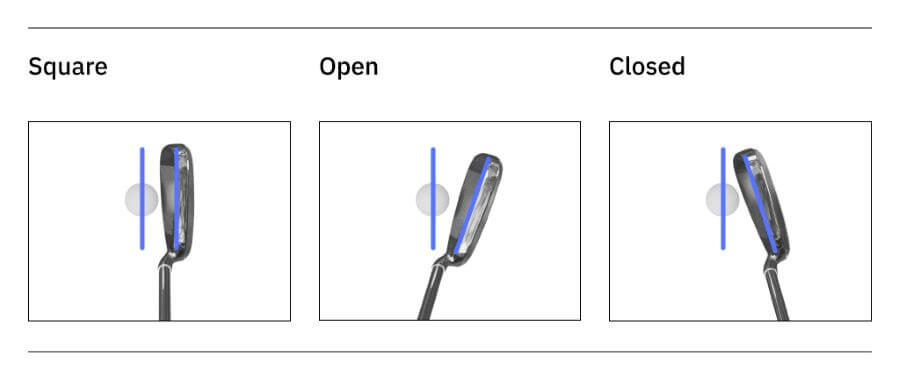
Problems with an Open Clubface in the Golf Swing
The open clubface is one of the most common swing flaws in golf. When the clubface is open, a long list of swing faults can come up as a result.
Some of these include:
- Swinging to the left (out-to-in path) and thus slicing the ball.
- Keeping weight on the back foot and losing power.
- Trying to square the clubface at the last moment with a weak flip.
Problems with a Closed Clubface in the Golf Swing
The closed clubface is not as common as the open clubface, but it can happen. It is created by too much wrist flexion as the golf club reaches the ball.
Slight flexion is a good thing, but if it is exaggerated, you may notice the ball going further and further left of the target. Some of the reasons the golf club is closed can include:
- Swinging too far to the right (in to out) and thus hooking the ball.
- Having too strong of a grip at setup and too much forward shaft lean.
- Getting to a flat or slightly flexed position at the top of the backswing and then not squaring it up through impact.
How to Control the Clubface at Impact
The way to control the clubface angle will vary depending on the type of golfer you are and even the club you are swinging.
We know for sure that the grip, wrist angle, forward shaft lean, and proper rotation all impact one’s ability to control the clubface.
The Role of Grip
Some golfers will strengthen their grip to get rid of a slice or even weaken it a little if they are hooking the ball.
If you have average wrist strength and want to stick to the traditional method, a neutral grip is a great way to consistently square the clubface.
Ensure your left hand (for right-handed players) is not rotated too far to the left or the right. This neutral position also allows your wrists to be set up correctly right from the start.
Experimenting with your grip can help you determine if a strong or weak grip is best for your game.
Wrist Angles in Swing
The open club face is caused by too much lead wrist extension (cupping). Wrist extending (cupping/bending) and flexing (bowing/arching) are the motions that open and close the club face.
The extension opens the club face; flexion closes the club face.
The more control over flexion/extension you have, the better you will control the club face and shot direction.
Now look at the comparison of 2 swing positions:
- IMAGE 1: The clubface is too open. It is pointing up in the sky – a result of the lead wrist being too extended (cupped).
- IMAGE 2: The clubface is square during the downswing. It is pointing in the ball’s direction – resulting in the lead wrist being flatter or even slightly flexed (bowed).

If you have a lot of wrist extension, it is common to flip the wrists just before impact.
Forward Shaft Lean at Impact
You need to ensure forward shaft lean when your club reaches impact. If the shaft is square or trailing behind the clubhead, it can affect the clubface angle.
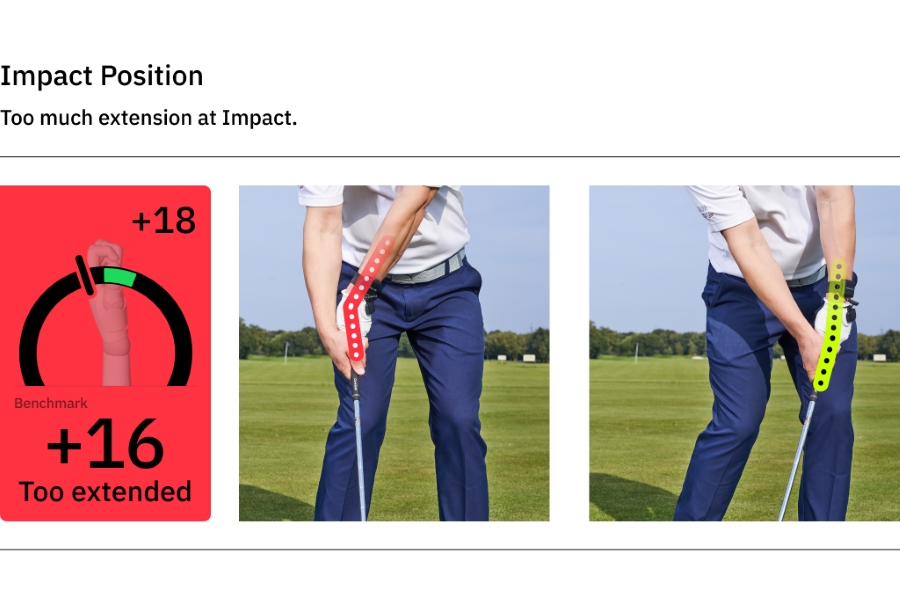
Losing that shaft angle is sometimes referred to as flipping at impact.
Some golfers try to exaggerate forward shaft lean at setup, but that’s unnecessary.
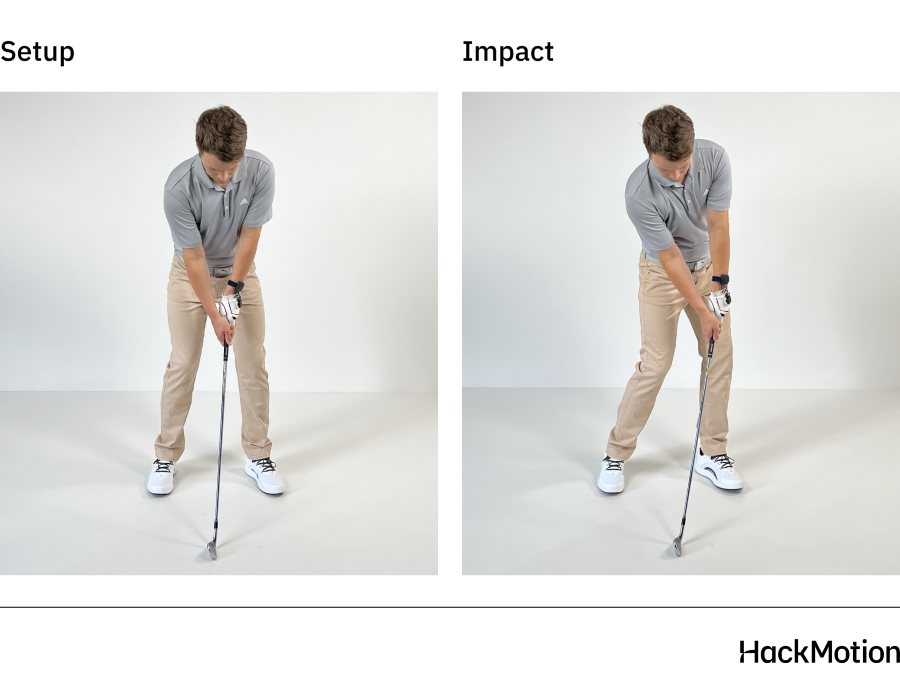
A slight lean at setup, combined with proper weight transfer, helps deliver a square face at impact.
To check your positioning, take slow-motion videos of your swing and see if the shaft is leaning forward or hanging back.
For a deeper breakdown, check out HackMotion’s impact position checkpoints to understand key wrist movements.
You can also analyze your swing using HackMotion’s guide on flipping wrists at impact to see if you’re losing forward shaft lean.
Proper Rotation on the Downswing (For Your Body)
Although you can start with a clubface square at setup, it doesn’t necessarily mean you can keep it square throughout your entire swing.
Club faces rotate open and then back to square. The key word here is rotation.
Having your neutral grip and the proper wrist angles and rotation will help you rotate and release the club.
Players who get a golf club to a flatter position at the top of the swing require a lot of body rotation to fire through the ball. Players with a little more extension at the top of the swing may need to quiet the body and give the hands time to work.
How to Square Clubface Consistently (Practical Solutions)
Now that you understand the causes of the improper clubface angle and the havoc it can bring to your golf game let’s look at how you can start to square the clubface consistently.
Make Sure You are Setting up Correctly
Amateur golfers commonly rush the setup and move to the full swing. Take time to ensure you are at least starting with a square clubface. In addition, pay attention to the ball’s position.
If your ball is too far back in your stance, you may think you are striking with an open clubface when you are just hitting the ball too soon.
The same can happen when the ball is too far forward, and your clubface has rotated towards closed before you even strike the ball.
Perfect the Takeaway
If you start to take the club back and your first move is to open or close the angle of the clubface, you’ll spend the rest of the swing trying to get it right.
The takeaway is a crucial part of the golf swing for many reasons, but it is essential when working on clubface control. By the time the club is waist-high, the clubface angle can already be significantly open or closed.
Practice taking a low and slow takeaway, ensuring the clubface is rotating and turning just enough to stay square when you make contact again.
Learn to Release the Golf Club
It’s difficult to know what it feels like to release a golf club. Interestingly, what the release feels like to one golfer may be different than it is for another.
One of the most helpful tips for golfers looking to release a club is to feel as though your right forearm (for right-handed players) is going to cross over your left forearm just after impact.
Most players try to shut the clubface down with their left hand instead of using their arms to rotate properly through the impact position.
You can generate much more power and consistency by properly rotating your forearms through impact.
The Simplest Way to Square Your Clubface
There is only one way to square a clubface at impact: having the correct wrist angles.
Using HackMotion wrist sensors, we have measured more than 1,000,000 golf swings of professional and amateur players.
The top players with the best swings all have these things in common:
- Very little increase in extension from setup to the top of the backswing.
- A decrease in lead wrist extension from the top of the backswing to impact.
- Less extension at impact than there was at setup (an impact position with a slightly flexed lead wrist).
From the top of the swing, where the players transition from backswing to downswing, the better players work on squaring the clubface early.
This gives them time to accelerate through impact and hit the golf ball with a square clubface and increased club head speed.
Learn Some Punch Shots
Punch shots require a ¾ swing and a descending blow with a square clubface.
If you can learn to hit a punch shot with the clubface square, chances are you can also hit your full swing shots like this. Punch shots are good to practice with something like a 7-iron.
Ensure that you are getting that slight forward shaft lean at impact and that your arms and wrists rotate as they should be through the impact position.
With punch shots, pick a target straight in front of you and focus on hitting this target over and over.
An easy way to practice punch shots is to use the HackMotion app and work on the Release Drill. This drill works on how to get perfect wrist position from waist high to waist high.
Perfect Your Release with HackMotion
Fine-tune your release for consistent contact. Start with a short swing to master control before adding power.
HackMotion Release Drill – Step by Step
- Set Up: Address the ball with a shorter swing in mind.
- Club Parallel to Ground (P7) to Impact: Swing from club parallel in the downswing into impact.
- Hands Forward: Aim to keep your hands slightly ahead of the ball at impact.
- Check Wrist Angles: Use HackMotion to confirm that your wrist angle is in the correct “in range” zone.
- Perform at least 10 reps before you pick up speed a little with the Dynamic Transition Drill.
Open Hand Drill
Jason Sutton has a great one-handed golf drill that helps you get a better idea of how your wrists should be working to square the clubface.
The open-hand drill requires you to grip the club with your lead hand in its normal position. Next, place the trail hand on the club so that it is just resting there. Essentially, put your hand in the proper position and then open it.
Then, take some smaller back-and-forth swings and notice how you are squaring the clubface. This drill allows you to see and feel the clubface square up.
To see this drill in action and explore more drills on how to square the clubface and improve your swing, click here.
Square the Clubface Sooner
We know that great players are able to square the clubface sooner than most amateur golfers.
A great drill to help you square the clubface sooner is the HackMotion Motorcycle Drill.
With the Motorcycle Drill you will flex your wrists in the transition from backswing to downswing to ensure you have more flexion at impact than you did at setup.
Motorcycle Drill – Master Wrist Flexion in the Downswing
Focus on continuously adding flexion until the club reaches parallel, then smoothly complete your swing.
HackMotion Motorcycle Drill – Step by Step:
- Set Up: Address the ball as usual.
- Downswing Flexion: As you begin your downswing, gradually add wrist flexion so that by the time the club is parallel to the ground (P6), you’ve achieved your desired wrist bend.
- Continue to Impact: Maintain that flexion into impact, then release naturally through the finish.
- Experiment with Speed: Start slowly, then increase speed while retaining proper angles.
- Practice while hitting golf balls but also work on this drill by completing the motion and not hitting shots.
Using Instant Data and Feedback with HackMotion
To consistently square the clubface, you need two things: a clear understanding of your lead wrist position and real-time feedback to correct it.
That’s where HackMotion’s instant data and in-app feedback system makes a difference.
With real-time wrist analysis, the HackMotion app not only detects your wrist angles throughout the swing but also provides instant feedback on whether you’re in the correct position.
HackMotion is the only tool that acts as a real-time coach for your wrist, guiding you through the correct movements with visual aids, audio feedback and built-in drills in the app.
Plus, with detailed session tracking and data organization, you can measure your progress over time and make informed adjustments.
FAQs
Here are a few of the most commonly asked questions about how to square the clubface at impact.
How do you square the clubface early in the downswing?
One of the (many) things that professionals do better than amateurs is square the clubface early in their downswing. The best way to do this is to avoid extension or cupping in the lead wrist.
When you avoid this, your wrist will be in the right position to swing through the ball without having to make adjustments right before impact. Try the Motorcycle Drill to square the clubface sooner.
Which hand controls the clubface?
The left hand controls the clubface for a right-handed player, and the opposite would be true for a left handed player. The left hand is considered the lead hand in a right handed golf swing.
Why is my clubface wide open at impact?
Chances are you opened the clubface on your takeaway and never rotated it back to square again during the swing.
In addition, you likely have too much extension or cupping in your wrist angle, and this causes the clubface to be too far open.
Is clubface control difficult to learn?
Clubface control becomes difficult for many golfers because of a lack of feedback and data needed to correct it.
With HackMotion, it becomes incredibly easy to know exactly where in your swing the issues are coming from and how to adapt and make a fix quickly.
Final Thoughts
Learning how to control and square the golf clubface can make you a better player.
Everywhere from the putting green to the tee requires a square clubface, so investing your time in this makes complete sense.
HackMotion simply makes it easier to improve faster by being your coach throughout the learning process. Golf is all about squaring the clubface; learn to square yours today.
